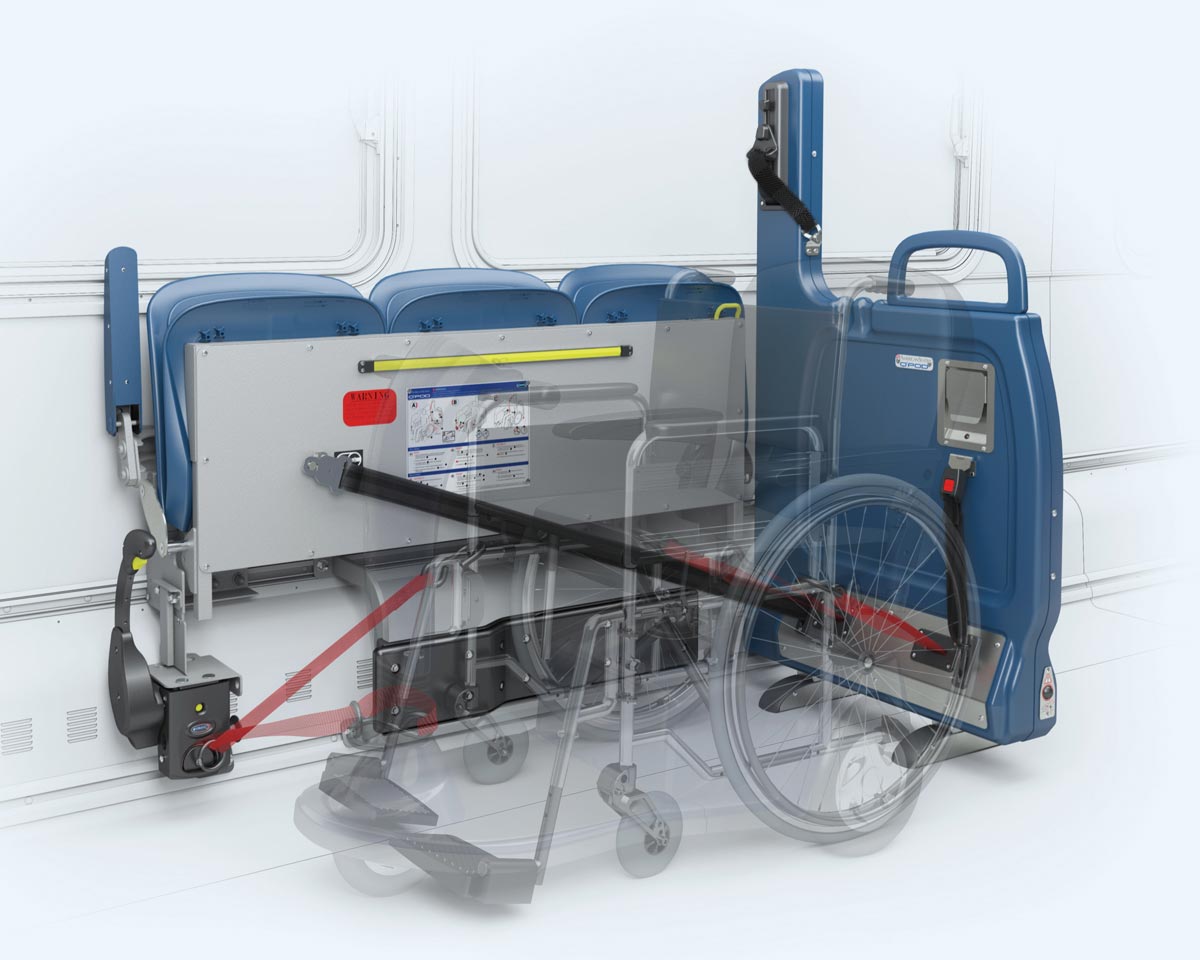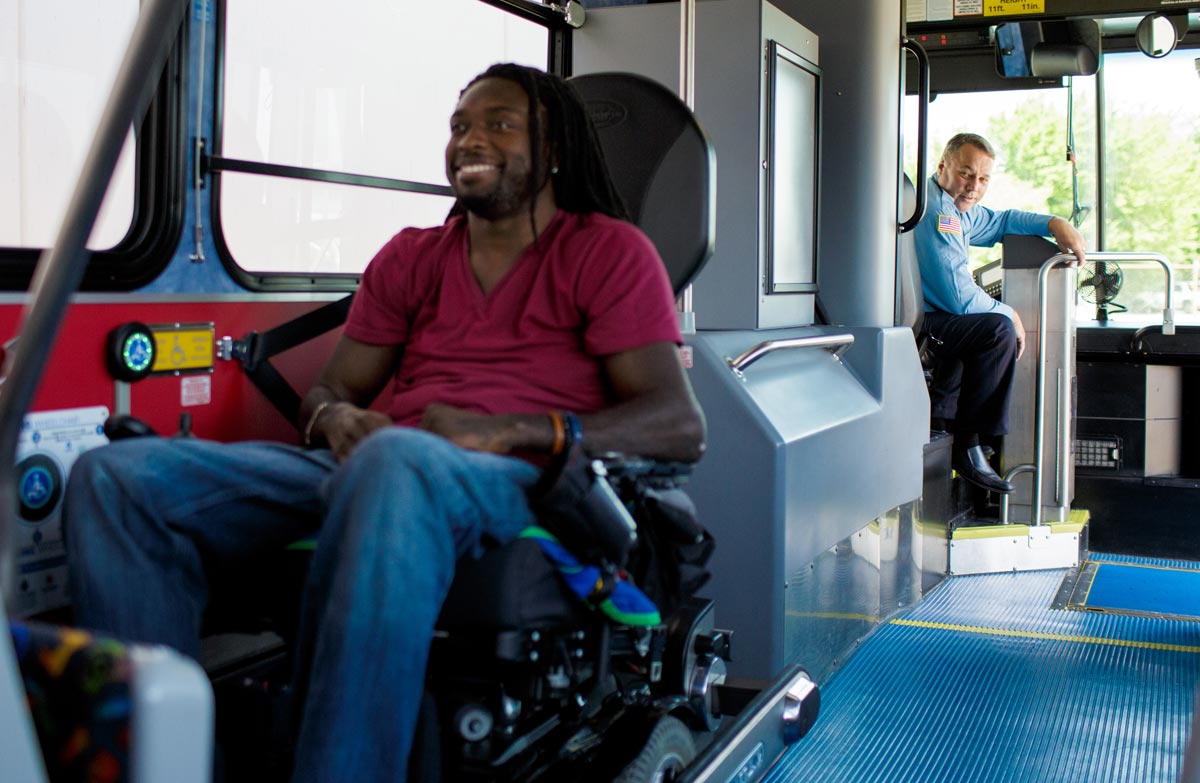
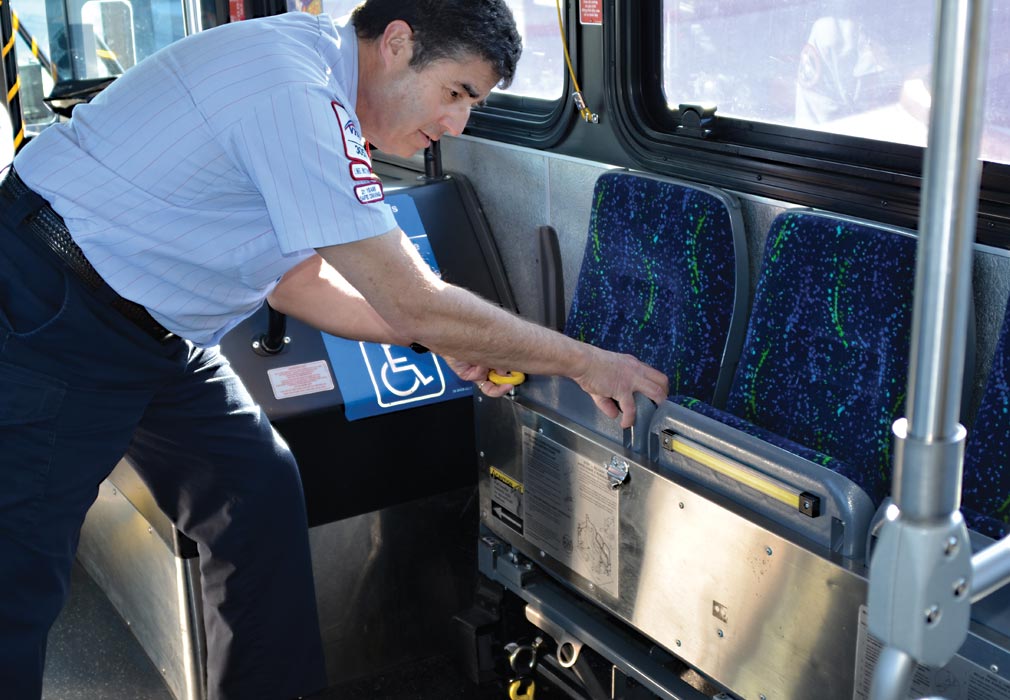
Q’POD Case Study: VTA
VTA Increases Operator Productivity and Wheelchair Passenger Comfort with Q’POD
Since specifying the Q’POD wheelchair securement station for the 70 newest buses in its 426-vehicle fleet in 2010, Santa Clara Valley Transportation Authority (VTA) in California has realized all of the operational and customer satisfaction benefits that it sought in making the switch.
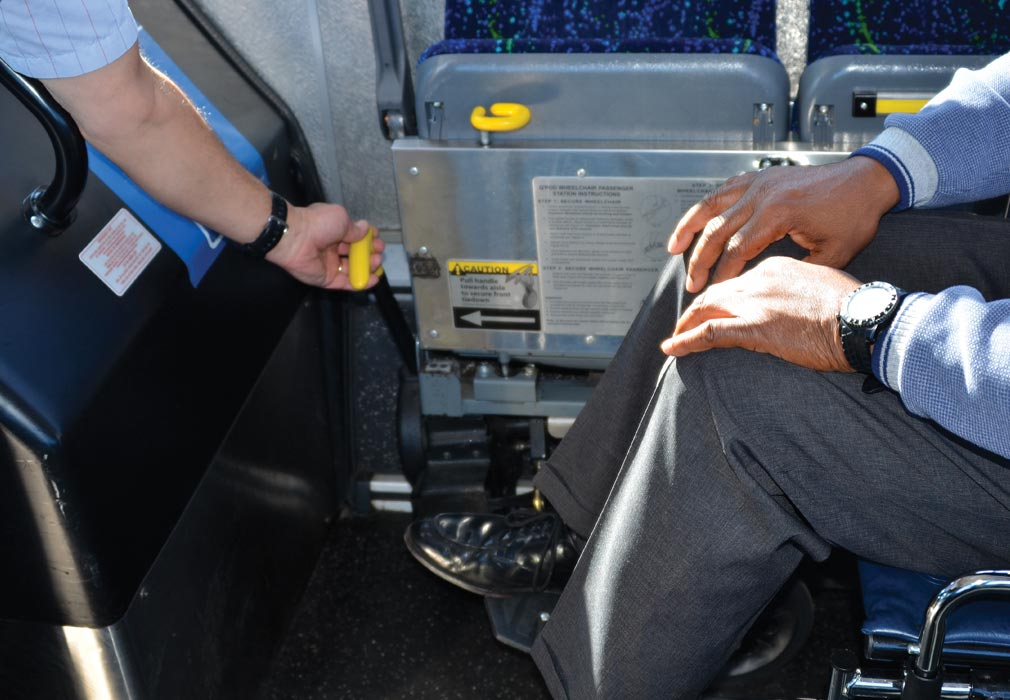
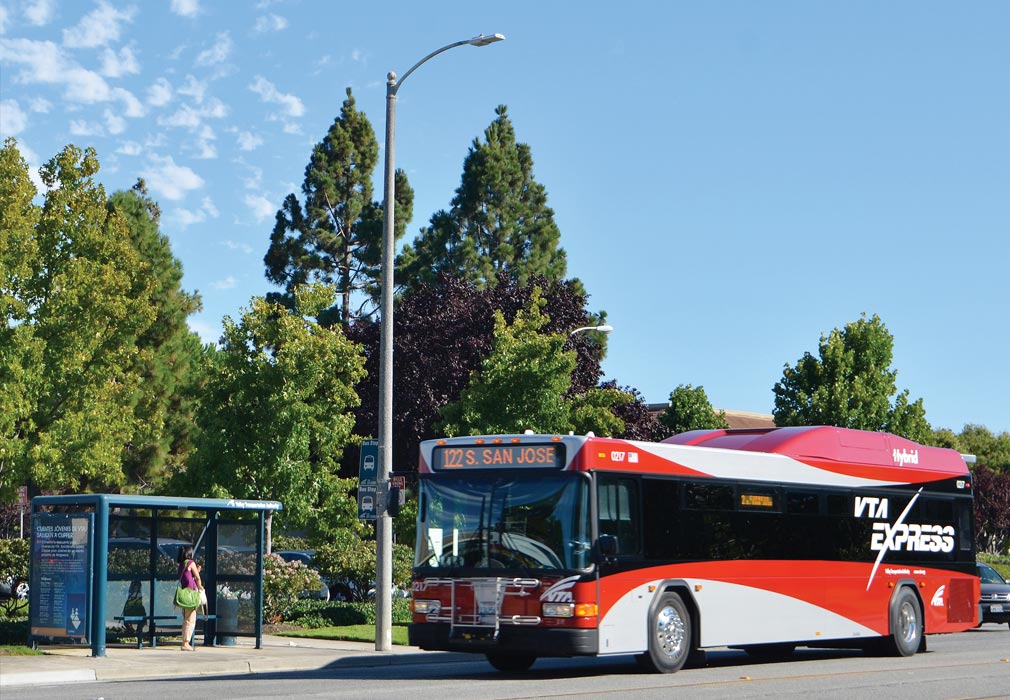
“By speeding the securement process, easing the burden on operators and improving the initial comfort of wheelchair passengers, we enhance our service and make it more likely that occasional riders become frequent ones,” says Jim Wilhelm, VTA Senior Mechanical Engineer.
VTA prides itself on its longstanding leadership in assuring service accessibility for its reduced-mobility passengers. But by 2005, VTA was finding it challenging to assure adequate operator training and proficiency with the growing variety of OEM-supplied securement systems in the different models and model years of buses in its 426-vehicle fleet.
According to Wilhelm, those challenges included selecting proper S-hook or tether attachment points, getting a wheelchair passenger to allow the operator to attach the mandatory securement device and encouraging the passenger to use the optional lap and shoulder belts. “Maintaining schedules was also a challenge, due to the time it takes to secure mobility devices, especially when there is an unusual spike in those types of boardings on any given line,” adds Wilhelm. And, as transit executives everywhere will understand, it could be difficult teaching operators — who are already dealing with the pressures of meeting schedules and assuring passenger safety — how to display sensitivity to a broad spectrum of passenger personalities.
“The potential benefits we had hoped for have proven to be real, and VTA’s Operators are very pleased we made the change. The Q’Straint system has helped to improve customer safety and eased the challenges of securing mobility devices.”
After evaluating all available solutions, Wilhelm says VTA initially chose Q’Straint retractors to help meet its operational challenges and provide a standardized system. When Q’Straint introduced the Q’POD securement station, VTA specified the new system on its new buses beginning in 2010. “The potential benefits we had hoped for have proven to be real. Q’POD has helped to improve customer safety and eased the challenges of securing mobility devices.”
Chief among those challenges was the invasion of wheelchair passengers’ personal space and the time and effort required to secure a wheelchair. “The bus operator having to be in close proximity to attach the wheelchair securements creates a situation that is uncomfortable for both the operator and the transit customer. Another issue is getting down to floor level to access the front inboard belt. By eliminating that belt, Q’POD allows the operator to attach the remaining securements by leaning over instead of having to go down to one knee.”
Q’POD has also helped VTA to overcome what Wilhelm calls “the seemingly infinite number” of different wheelchairs and scooters on the market. “It is impossible for every operator to be an expert in securing every different mobility device that comes on board,” he says. “Because Q’POD secures mobility devices from tipping by cinching to the side stabilizing bumper, it effectively creates a much more forgiving securement process.” By making perfect placement of the belts less critical, Q’POD provides a nearly universal solution for every vehicle and mobility device in use today.


Q’POD Case Study: VTA
VTA Increases Operator Productivity and Wheelchair Passenger Comfort with Q’POD
Since specifying the Q’POD wheelchair securement station for the 70 newest buses in its 426-vehicle fleet in 2010, Santa Clara Valley Transportation Authority (VTA) in California has realized all of the operational and customer satisfaction benefits that it sought in making the switch.


“By speeding the securement process, easing the burden on operators and improving the initial comfort of wheelchair passengers, we enhance our service and make it more likely that occasional riders become frequent ones,” says Jim Wilhelm, VTA Senior Mechanical Engineer.
VTA prides itself on its longstanding leadership in assuring service accessibility for its reduced-mobility passengers. But by 2005, VTA was finding it challenging to assure adequate operator training and proficiency with the growing variety of OEM-supplied securement systems in the different models and model years of buses in its 426-vehicle fleet.
According to Wilhelm, those challenges included selecting proper S-hook or tether attachment points, getting a wheelchair passenger to allow the operator to attach the mandatory securement device and encouraging the passenger to use the optional lap and shoulder belts. “Maintaining schedules was also a challenge, due to the time it takes to secure mobility devices, especially when there is an unusual spike in those types of boardings on any given line,” adds Wilhelm. And, as transit executives everywhere will understand, it could be difficult teaching operators — who are already dealing with the pressures of meeting schedules and assuring passenger safety — how to display sensitivity to a broad spectrum of passenger personalities.
“The potential benefits we had hoped for have proven to be real, and VTA’s Operators are very pleased we made the change. The Q’Straint system has helped to improve customer safety and eased the challenges of securing mobility devices.”
After evaluating all available solutions, Wilhelm says VTA initially chose Q’Straint retractors to help meet its operational challenges and provide a standardized system. When Q’Straint introduced the Q’POD securement station, VTA specified the new system on its new buses beginning in 2010. “The potential benefits we had hoped for have proven to be real. Q’POD has helped to improve customer safety and eased the challenges of securing mobility devices.”
Chief among those challenges was the invasion of wheelchair passengers’ personal space and the time and effort required to secure a wheelchair. “The bus operator having to be in close proximity to attach the wheelchair securements creates a situation that is uncomfortable for both the operator and the transit customer. Another issue is getting down to floor level to access the front inboard belt. By eliminating that belt, Q’POD allows the operator to attach the remaining securements by leaning over instead of having to go down to one knee.”
Q’POD has also helped VTA to overcome what Wilhelm calls “the seemingly infinite number” of different wheelchairs and scooters on the market. “It is impossible for every operator to be an expert in securing every different mobility device that comes on board,” he says. “Because Q’POD secures mobility devices from tipping by cinching to the side stabilizing bumper, it effectively creates a much more forgiving securement process.” By making perfect placement of the belts less critical, Q’POD provides a nearly universal solution for every vehicle and mobility device in use today.
Comments are closed.
